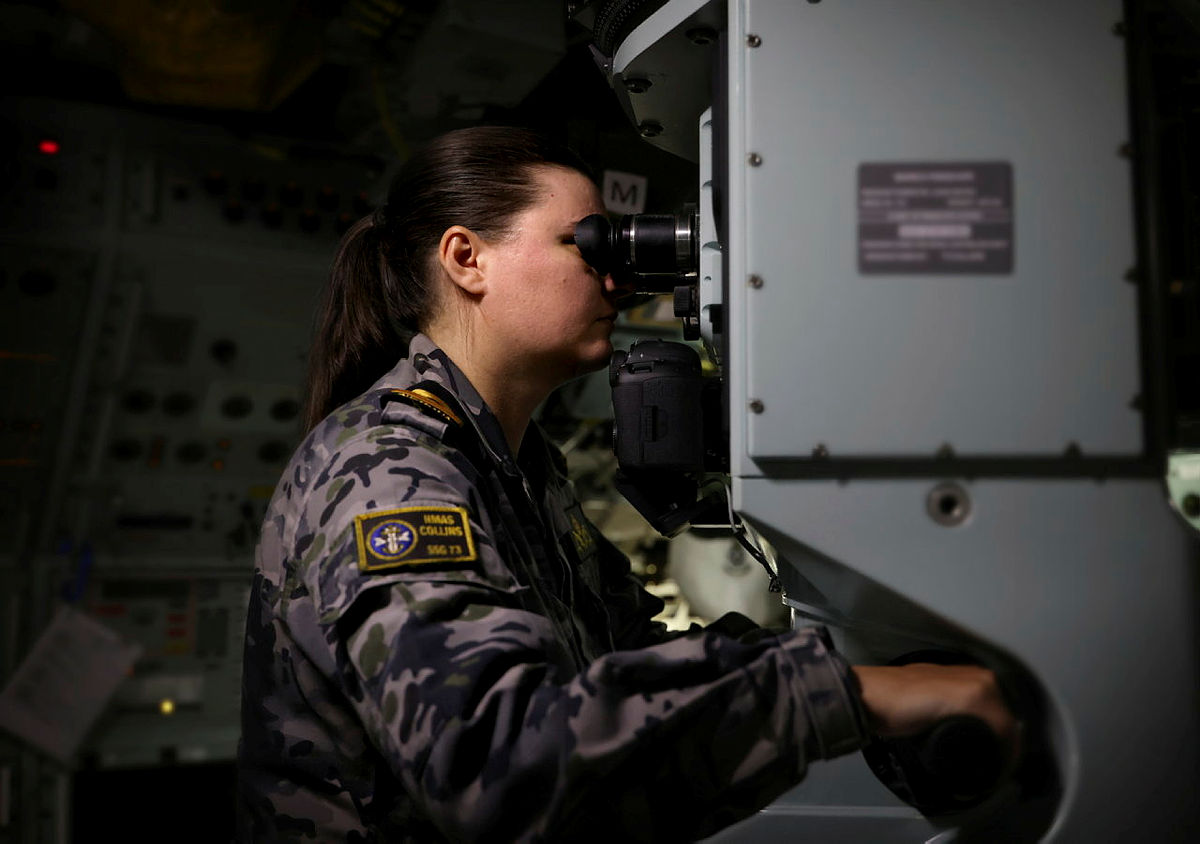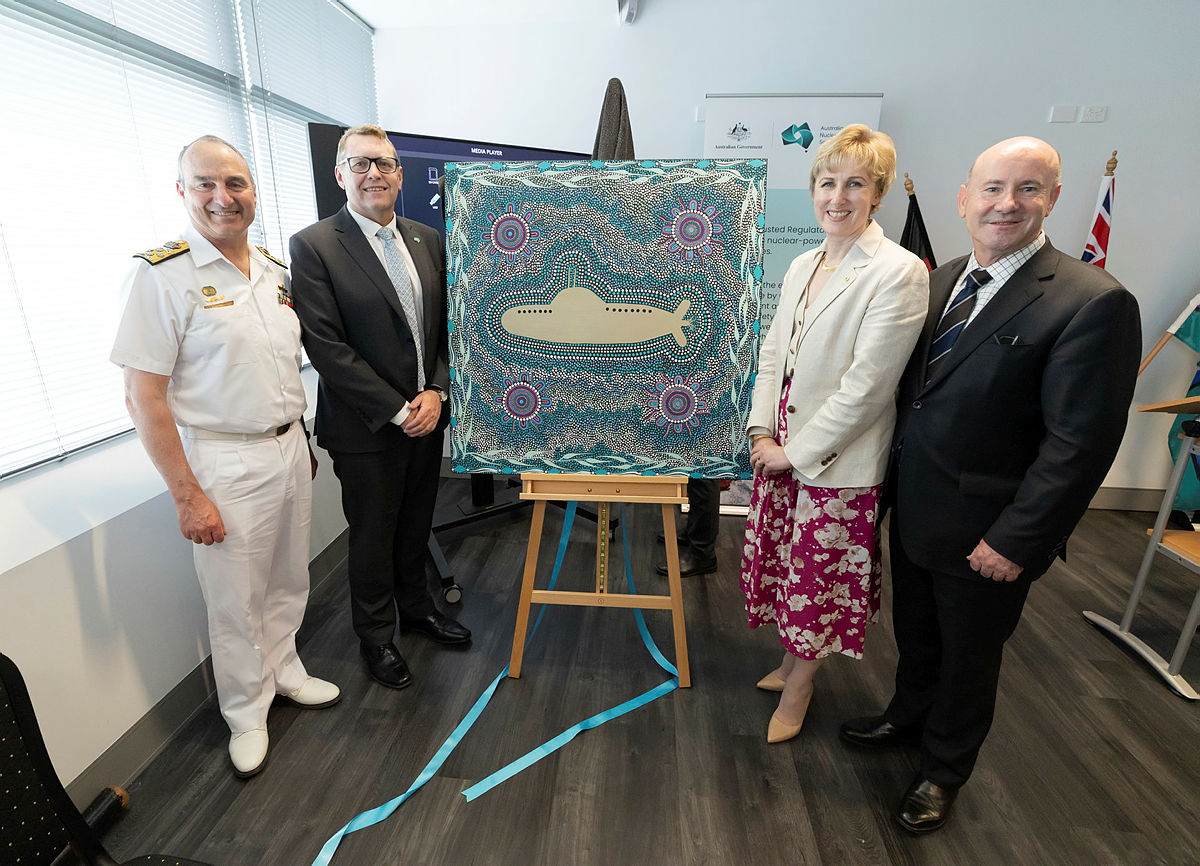Australian Prime Minister the Hon Anthony Albanese MP, President of the United States Joe Biden and United Kingdom Prime Minister Rishi Sunak during the announcement in San Diego for Australia to acquire a conventionally-armed, nuclear-powered submarines through the Australia-United Kingdom- United States enhanced security partnership, known as AUKUS. (Photo by Australian Department of Defence)
The trilateral security pact known as AUKUS, comprising Australia, the United Kingdom, and the United States, is poised to redefine the geopolitical landscape and elevate Australia’s defence capabilities to unprecedented heights.
As Australia commemorates the one-year anniversary of AUKUS nuclear-powered submarine pathway, it is imperative to reflect on the significance of this historic pact and the profound impact it will have on Australia’s security, economy, and place in the world. With determination and resolve, Australia is poised to seize the opportunities presented by AUKUS and chart a course toward a safer, more prosperous future.
One year ago, on March 14, 2023, the historic announcement of Australia’s acquisition of nuclear-powered submarines based on an optimal pathway marked a transformative moment for national defence and industry.
The giant $368 billion-dollar trilateral agreement outlines a phased approach aimed at strengthening national security, fostering regional stability, and revitalizing Australia’s defence industry. The three key elements of the agreement’s Pillar One is focused on increased submarine visits, the sale of three to up to five Virginia-class submarines, and the creation of a fleet of eight new conventionally-armed nuclear-powered submarines, SSN-AUKUS, based on a UK design.
AUKUS Pillar 2 intends to enhance joint capabilities and interoperability, focusing on cyber capabilities, artificial intelligence, quantum technologies and additional undersea capabilities. This is likely to onboard QUAD members such as Japan and India, as well as New Zealand for joint collaboration.
Crucially, the agreement is not just about defence; it represented a significant investment in the future of Australia’s economy and workforce. AUKUS promises to create around 20,000 direct jobs over the next 30 years, spanning various sectors from industry to the public service.
The commitment to AUKUS signals a whole-of-nation effort, presenting a unique opportunity for businesses, industries, and educational institutions across Australia to contribute to and benefit from this transformative endeavor. The program aims to create a highly skilled and sovereign workforce capable of sustaining and building advanced submarines in Australia. The life of an existing fleet of six Collins-class submarines is also being extended alongside.
South Australia and Western Australia emerged as key players in the AUKUS initiative, with significant investments earmarked for infrastructure upgrades and workforce development. The Submarine Construction Yard in Osborne, South Australia, promised to be almost three times larger than initially forecasted, generating thousands of direct shipyard jobs.
Meanwhile, Western Australia’s HMAS Stirling would witness more frequent visits by US submarines such as the recent Los Angeles-class USS Annapolis (SSN 760) last week, followed by rotations of UK and US submarines, further strengthening Australia’s maritime capabilities. The Submarine Rotational Force-West initiative aimed to develop Australia’s capacity to operate and maintain future submarines through at-sea experience.
Recent revelations regarding the US submarine industrial base’s inability to meet the anticipated production target of 2 boats annually have triggered a broader discourse and raised doubts about Australia’s prospective acquisition. Since opting out of the French submarine contract in 2021, Australia has aspired to procure eight conventionally-armed nuclear-powered submarines instead of the initially planned twelve diesel-electric vessels. However, concerns have arisen regarding the feasibility of fulfilling Australia’s ambitions amid uncertainties surrounding the US submarine production capacity. This development has prompted speculation and skepticism regarding whether Australia’s long-awaited aspirations will come to fruition.
Looking ahead, AUKUS presents immense opportunities and challenges for Australia as it navigates the complexities of nuclear-powered submarines and strategic partnerships. The success of AUKUS hinges on sustained collaboration, investment, and the development of a skilled workforce capable of realizing the program’s ambitious goals.





